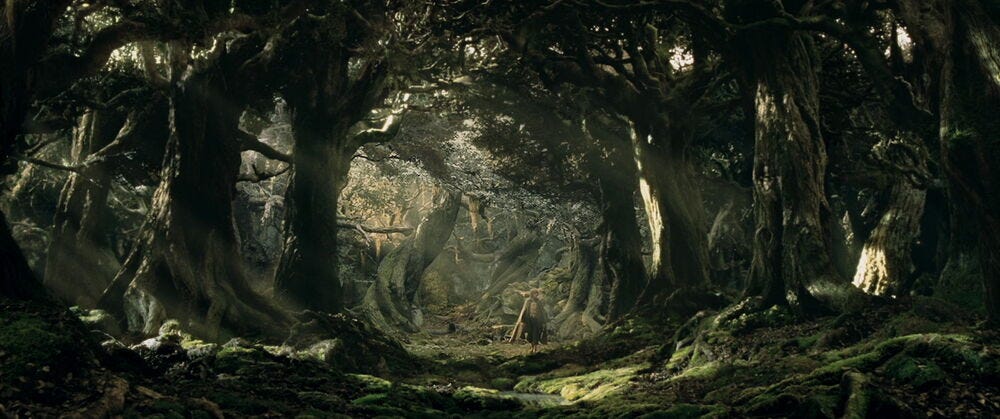Descriptions of Trees Are Important: A Brief Thought on Lord of the Rings
The go-to joke about the Lord of the Rings, particularly Fellowship of the Ring, is that there’s a lot of descriptions of trees. Too much, some might say. And I will admit - There’s a ton of tree chatter. Between Hobbiton and Rivendell, particularly when the group of four Hobbits is hiking through the Old Forest, you get all manner of foliage and fauna to delight in. This is the point where many have told me that they kind of shut down during reading - Why is Tolkien so into talking about trees? Can’t he get to the cool stuff like sword fights with Orcs, the Balrog, and that funny little twerp who likes the Ring a lot?
Well, I’d argue that the infamous “descriptions of trees” play a huge role in the strength of the narrative going forward. Because by the time Return of the King rolls around, readers will find that the explanation of the setting has been flipped into something far more miserable. As Frodo and Sam trudge through Mordor, we don’t get trees but hot sand and stone. The healthy Brandywine and the lush river Anduin that the group floats down in Fellowship have been replaced by strangling, lip-cracking thirst. There is no food, nor any measure of bounty provided by forest and field. By the time they’re hiking up the mountain, you’re begging for a detail that involves a tree or a flower or a blade of grass. Hell, even a stick would be nice.
That’s not even counting the fact that in The Two Towers, Tolkien introduces an entire race of beings that are, well, trees. Obviously, the author has intended for us to form a kind of kinship with the wealth of nature, so much so that when “talking Oak” gets introduced, we’re able to better connect with it. Much has been written about the themes in LotR - Industrialization vs The Natural World, how war decimates the inherent beauty of a land, how man can steadfastly ruin the things that brings him life, etc. But even on a micro level, essentially plugging how gorgeous and full the woods of Middle Earth can be changes how we perceive the rest of the locations. It ties the reader to that concept of beauty, of wonder in the environment. As the Hobbits fear for what could be happening back in their homeland, they fear for nature itself.
I’m not saying that you’re somehow wrong for getting bored by Tolkien telling us all about the pretty trees. I don’t care. I’m not a Hobbit cop. However, I am saying that if you’re reading these sections and are wondering if it’s gonna pay off at all later, it does regarding how you absorb the rest of the series and how emotionally and viscerally effective some of the later bits are.
Anyway, that’s neat.

